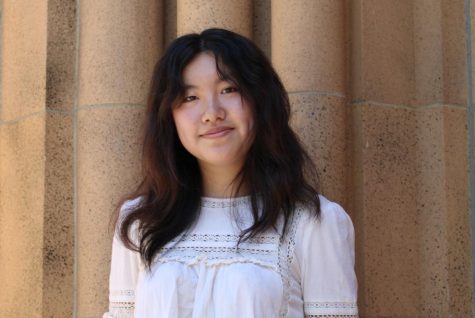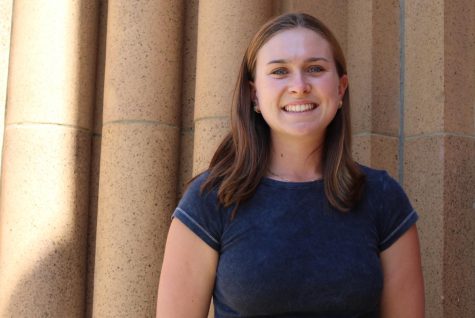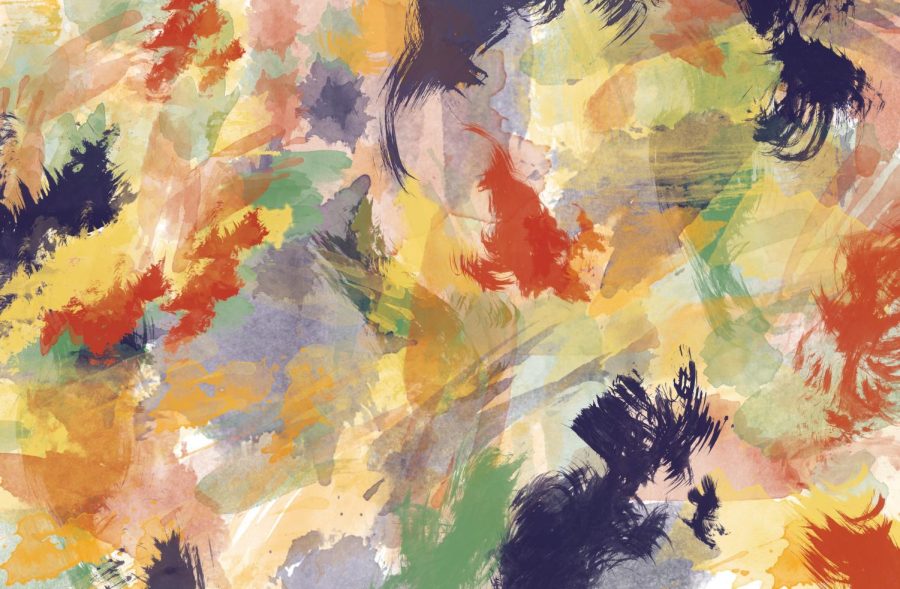Stolen Art, Stolen Stories
The misrepresentation of art obscures the cultures that created it
Stepping into a museum, surrounded by an array of art from different time periods and cultures, you might wonder about the unique backstory of each piece of art. However, the backstories on the museum plaques may not be wholly accurate. The art may have a convoluted path from creation to exhibition.
Unfortunately, a historical perspective reveals a long list of instances when works of art were taken from their culture of origin without consent and misrepresented, causing the art to lose its original meaning.
Kylie Harrison, a research coordinator at KR&I who majored in history and government at Claremont McKenna College, is well aware of the longstanding issue of art being taken from entire groups of people and displayed in museums or galleries elsewhere.
“[Colonizing] countries went into other nations around the world, whether in Asia or in Africa or in Latin America,” Harrison said. “And during [the era of imperialism], the government permitted their countrymen to engage in the looting of those nations for different types of art.”
Sue La Fetra, the PALY AP Art History teacher, notes the immorality of these actions. “It’s essentially stealing,” La Fetra said. “It’s a complete disregard for other people’s cultures. ”
Colonizing countries often pilfer art from places they imperialize. “The British Museum is a collection of art that they have taken from around the world,” La Fetra said. “There are examples from all over; they have the moai from the South Pacific and the Frieze from the Parthenon. Greece asks for [the Frieze] back every year.”
There are certain justifications used to defend such theft. “The [British] said it’s better off here [in the British Museum] because we will preserve it, and Greece has an unstable government, and it might not be as preserved as well,” La Fetra said. “Greece built a museum to hold the Frieze, and they still refuse to give it back. That’s just outrageous.”
Large-scale art theft is also a matter of societal power imbalance. “Minority groups–the people without power–are most vulnerable to having their art stolen,” La Fetra said.
Going deeper into the heart of the issue, La Fetra explains how this disregard for minority groups and their input is justified by museums that refuse to acknowledge the hurt caused by keeping stolen artifacts. “You can find in the British Museum a story behind every artifact,” La Fetra said. “This is how they justify themselves, that people from around the world will come to see it and are educated on its significance.”
For example, during the late 1800s, Britain would invade other countries and take their art. At the British Museum, there is an exhibit showcasing the moai, two stone statues originally belonging to Easter Island. The Easter Island governor has begged the British Museum to return the moai due to the symbolic meaning of the statues and their importance to the culture.
Although the stealing and misrepresentation of art can not be undone, Harrison believes actions can and should be taken to help ease the relationship between the colonizers and the cultures whose art have been stolen.
Museums should now act with the future in mind, not the past. “You can’t undo history,” Harrison said. “You can’t change history, but you can return some of [the art] back.”
Museum curators, including those here in the Bay Area, are taking steps to address the issue of stolen art, but there is still more that can be done. “I think there need to be conversations–and there already are conversations happening,” La Fetra said. “There’s the De Young in San Francisco that just recently gave back Aztec artwork to Mexico. Not all of it, but a lot of it.”
Another example of remedying the misrepresentation of art in modern-day is through decolonizing initiatives, such as in the Museum of Us in San Diego. In the past, the museum had acquired indigenous people’s belongings that were taken during the Apache Wars. To represent the belongings correctly and acknowledge that the museum was built on indigenous people’s grounds, Micah Parzen, the director of the Museum of Us at San Diego, decided to begin decolonizing the museum through holding conversations with indigenous people.
“It’s a long history [but] it’s the right thing to do,” Parzen said. The Museum of Us is working on an initiative to decolonize their museum with a variety of indigenous peoples’ belongings after discovering that thousands of items were misrepresenting indigenous peoples.
Often, it is unclear where art originated from, either because it was stolen more than once from more than one culture or because it has already been in the possession of the colonizing country for a substantial period of time. However, Harrison believes this is no excuse.
“There’s a responsibility to find [the origin of the art] and demonstrate it,” Harrison said.
Knowing the origin of a piece of art provides context and brings a more wholesome understanding of the art. “By obscuring the identity of the artists, you’re also obscuring some of the meaning of the piece,” Harrison said.
Understanding other cultures is often achieved by observing and understanding their art. “[Learning about art from other cultures] does serve a purpose, a very important purpose for making people appreciate and acknowledge differences in beauty that transcends cultural boundaries,” Harrison said.
People behind the scenes get to decide what is shown in museums, affecting how people in a community view certain cultures and ethnicities.
“Making our museums…more inclusive and acknowledging the fact that history has been written by the victors and history has been written by the dominant culture and [recognizing] that informs what we get to see…it’s starting to happen but progress still needs to be made,” Harrison said.
Art conveys cultural value; it has the ability to inform people’s understandings of society and the people around them. “It’s important for people to see cultures outside of their own,” Harrison said.
When the art world grows and changes its representation of cultures, the rest of the world follows suit. “I think the world has gotten better at recognizing that no culture is better or worse than others,” La Fetra said. “We still have a long way to go.”
Museums are an important resource to represent marginalized cultures if done through an accurate lens. “It’s the responsibility of museums to include perspectives that are different and from different artists,” Harrison said. “And they should do that while also making sure that they’re not perpetuating issues they’re hoping to fight.”
Featured Image by Christy Du
Print Issue
Please click on the three vertical dots on the top right-hand corner, then select “Two page view.”

2021-2022 - Staff Writer
2022-2023 - Managing Editor
I joined C Mag because I love that journalism helps shine a light on issues that need addressing...

2020-2021 - Staff Writer
2021-2022 - Staff Writer
2022-2023 - Managing Editor
I joined C Mag because of the focus on arts and representing our...

2020-2021 - Staff Writer
2021-2022 - Staff Writer
2022-2023 - Social Media Manager
I joined C mag to meet people. My favorite part of C mag is...







